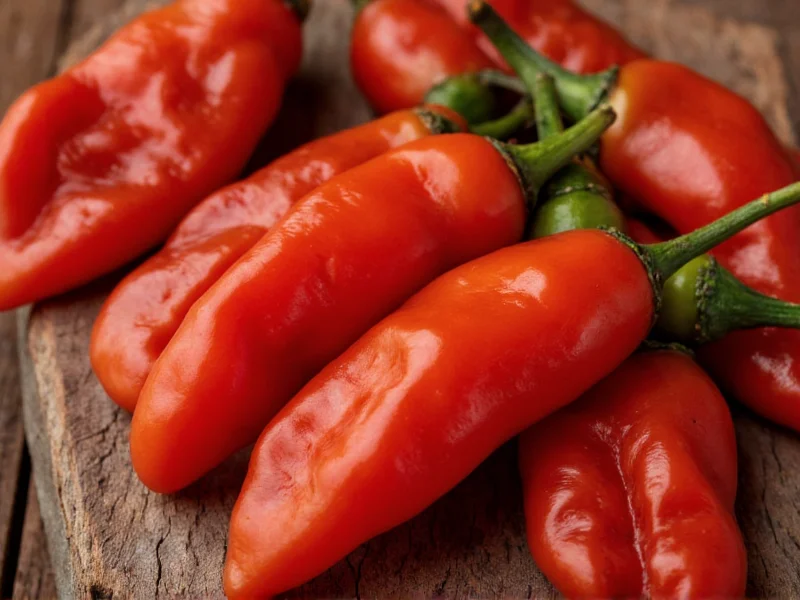Understanding the precise heat measurement of habanero extract requires examining both the Scoville scale methodology and the concentration process that transforms fresh peppers into potent extracts. The Scoville Organoleptic Test, developed in 1912 by pharmacist Wilbur Scoville, originally measured辣度 through human taste panels diluting pepper solutions until heat became undetectable. Modern laboratories now use High-Performance Liquid Chromatography (HPLC) for precise capsaicinoid quantification, converting results to Scoville units for consumer understanding.
The Science Behind Habanero Extract Concentration
When creating habanero extract, manufacturers typically use ethanol or oil as solvents to isolate capsaicinoids from dried peppers. This process removes water content and non-pungent compounds, resulting in a significantly more concentrated product. The exact Scoville rating depends on several factors:
- Original pepper heat (affected by growing conditions and variety)
- Extraction method and solvent used
- Concentration ratio (pepper-to-solvent)
- Additional purification steps
Commercial habanero extracts often undergo standardization to maintain consistent heat levels, though natural variation means exact Scoville measurements can fluctuate between batches. Pure capsaicin, the primary辣 compound, measures approximately 16,000,000 SHU, explaining why even small amounts of concentrated extract produce intense heat.
Comparing Heat Levels: Fresh vs. Extracted
| Product Type | Scoville Heat Units | Heat Relative to Jalapeño |
|---|---|---|
| Typical Jalapeño | 2,500-8,000 SHU | 1x |
| Fresh Habanero | 100,000-350,000 SHU | 30-140x |
| Habanero Powder | 250,000-400,000 SHU | 100-160x |
| Habanero Extract | 350,000-580,000+ SHU | 140-230x |
| Pure Capsaicin | 16,000,000 SHU | 6,400x |
This comparison reveals why habanero extract scoville measurements represent such an intense concentration of heat. The extraction process effectively removes the plant material and water content that dilutes the capsaicinoids in fresh peppers, resulting in a product that delivers maximum辣 impact with minimal volume.
Safety Considerations for Handling Habanero Extract
Working with habanero extract requires proper safety precautions due to its extreme potency. Unlike fresh peppers where heat is somewhat contained within the fruit's structure, extracts present immediate and intense exposure risk. Essential safety practices include:
- Always wearing nitrile gloves (latex offers insufficient protection)
- Using eye protection to prevent accidental exposure
- Working in well-ventilated areas to avoid inhaling vapors
- Starting with extremely small quantities (drops rather than teaspoons)
- Having dairy products or oils nearby to neutralize accidental exposure
Many culinary professionals recommend diluting habanero extract in a neutral oil or vinegar before use to create a more manageable concentration. A common ratio is one part extract to ten parts carrier liquid, creating what's known as a "10x" solution that's easier to measure precisely in recipes.
Culinary Applications and Measurement Precision
The primary advantage of habanero extract over fresh peppers lies in consistency and precision. When developing recipes commercially or for consistent home cooking, extracts provide reliable heat levels unaffected by seasonal variations in fresh pepper辣度. Professional kitchens often use habanero extract for:
- Hot sauces requiring standardized heat levels
- Marinades where even heat distribution is critical
- Beverages where pepper seeds and fibers would be undesirable
- Confectionery products where visual pepper pieces would be inappropriate
- Industrial food production requiring precise辣度 specifications
When substituting habanero extract for fresh peppers, remember that a single drop often equals the heat of an entire pepper. Culinary experts recommend starting with 1/8 to 1/4 drop per serving and adjusting carefully. The concentrated nature of habanero extract scoville measurements means that tiny measurement differences create significant heat variations in final products.
Understanding Labeling and Quality Variations
Not all habanero extracts deliver identical heat levels despite similar labeling. Manufacturers may use different concentration methods, source peppers from various regions, or blend with other辣 ingredients. When selecting habanero extract, look for:
- Specific Scoville unit declarations (rather than vague terms like "extra hot")
- Information about the extraction method used
- Batch testing results for consistency
- Reputable suppliers with transparent sourcing practices
High-quality habanero extracts maintain consistent habanero extract scoville measurements across batches, allowing chefs and food manufacturers to create reliably spicy products. Lower quality products may show significant variation, making recipe standardization difficult.
Practical Usage Guidelines
For home cooks interested in experimenting with habanero extract, consider these practical tips:
- Store extracts in dark glass bottles away from heat and light to preserve potency
- Always add extract to dishes near the end of cooking to preserve volatile compounds
- Use dedicated measuring tools that won't transfer辣 to other foods
- Keep a log of measurements used with specific recipes for future reference
- Remember that heat perception increases over time, so allow dishes to rest before final heat adjustment
Understanding the precise habanero pepper extract scoville rating helps culinary enthusiasts harness this intense ingredient safely and effectively. Whether creating artisanal hot sauces or adding subtle heat to complex dishes, recognizing the significant difference between fresh habanero heat and concentrated extract measurements prevents unpleasant surprises and wasted ingredients.











 浙公网安备
33010002000092号
浙公网安备
33010002000092号 浙B2-20120091-4
浙B2-20120091-4